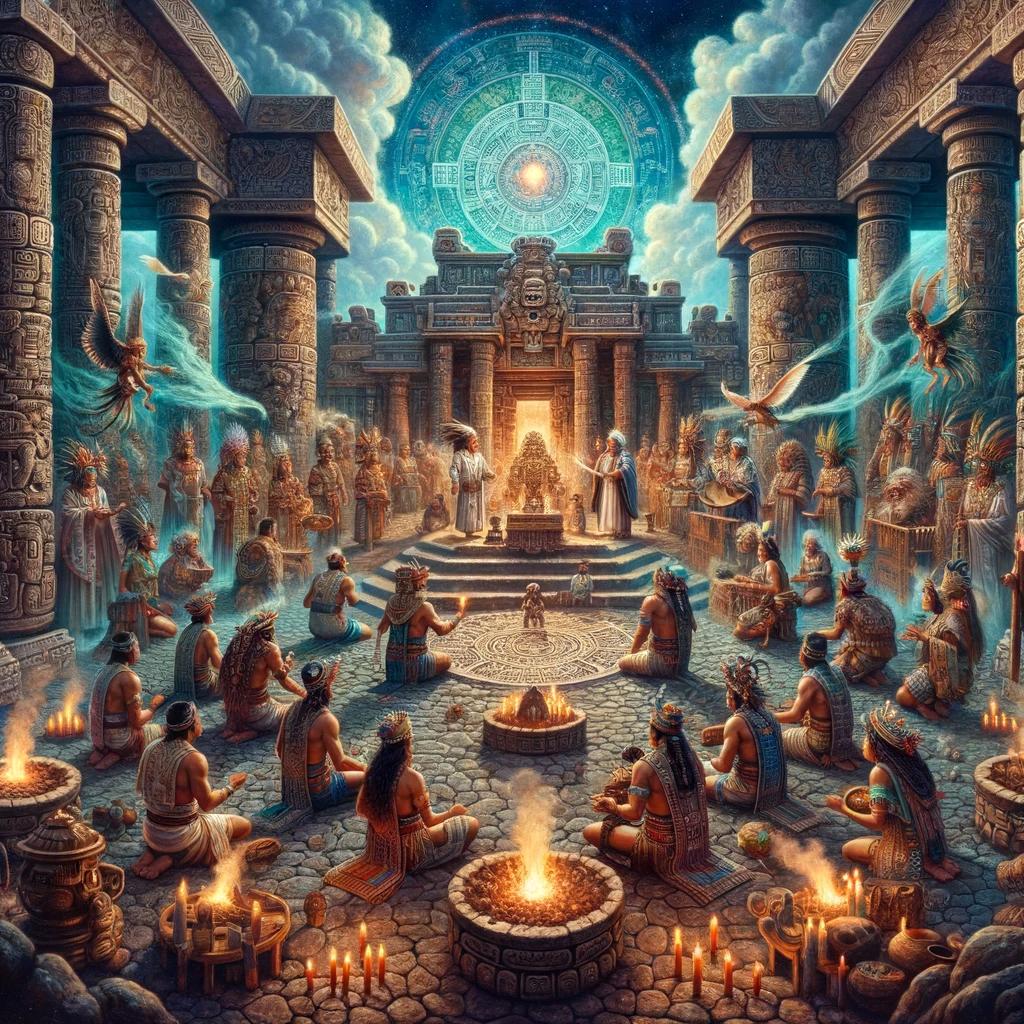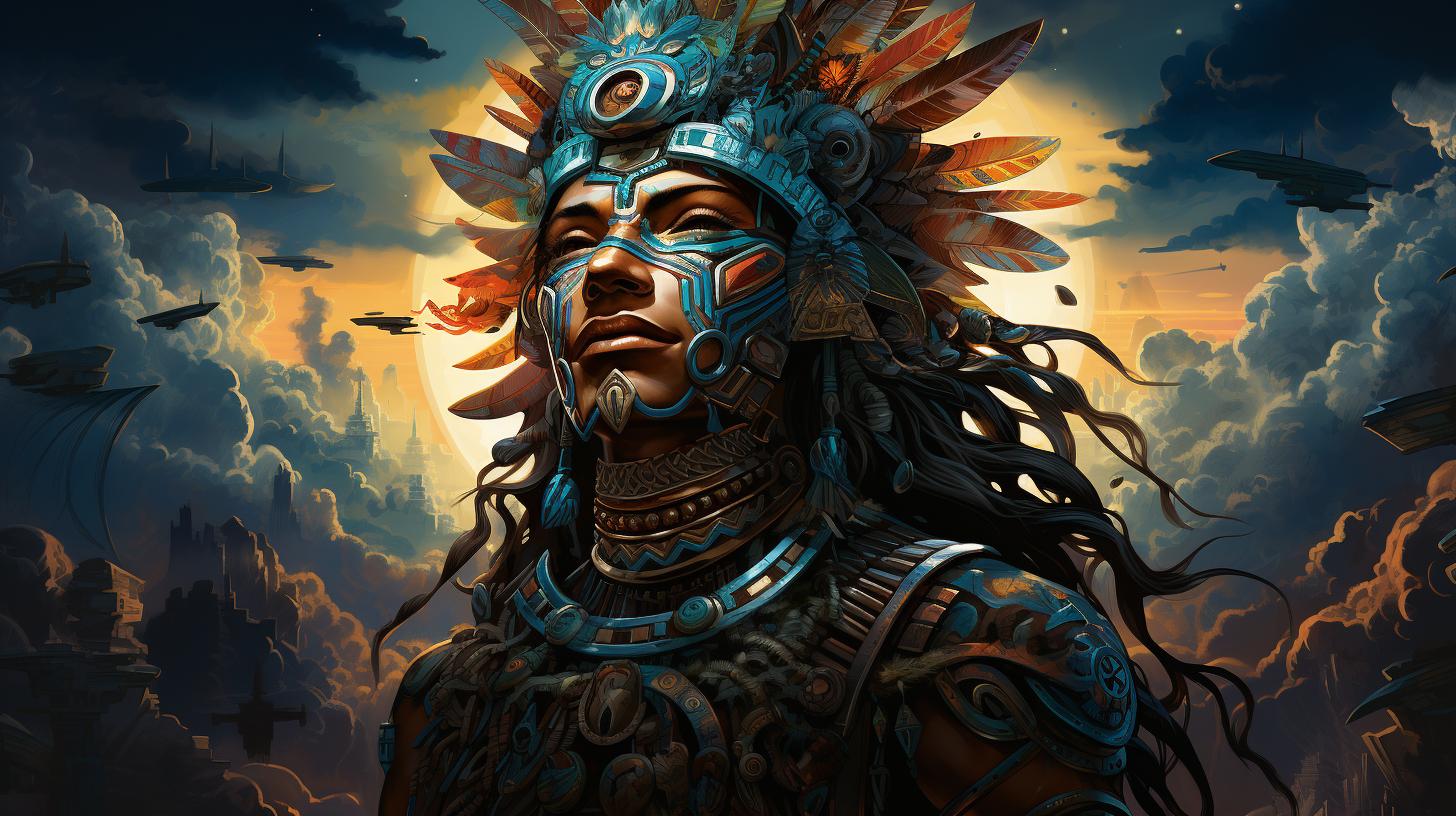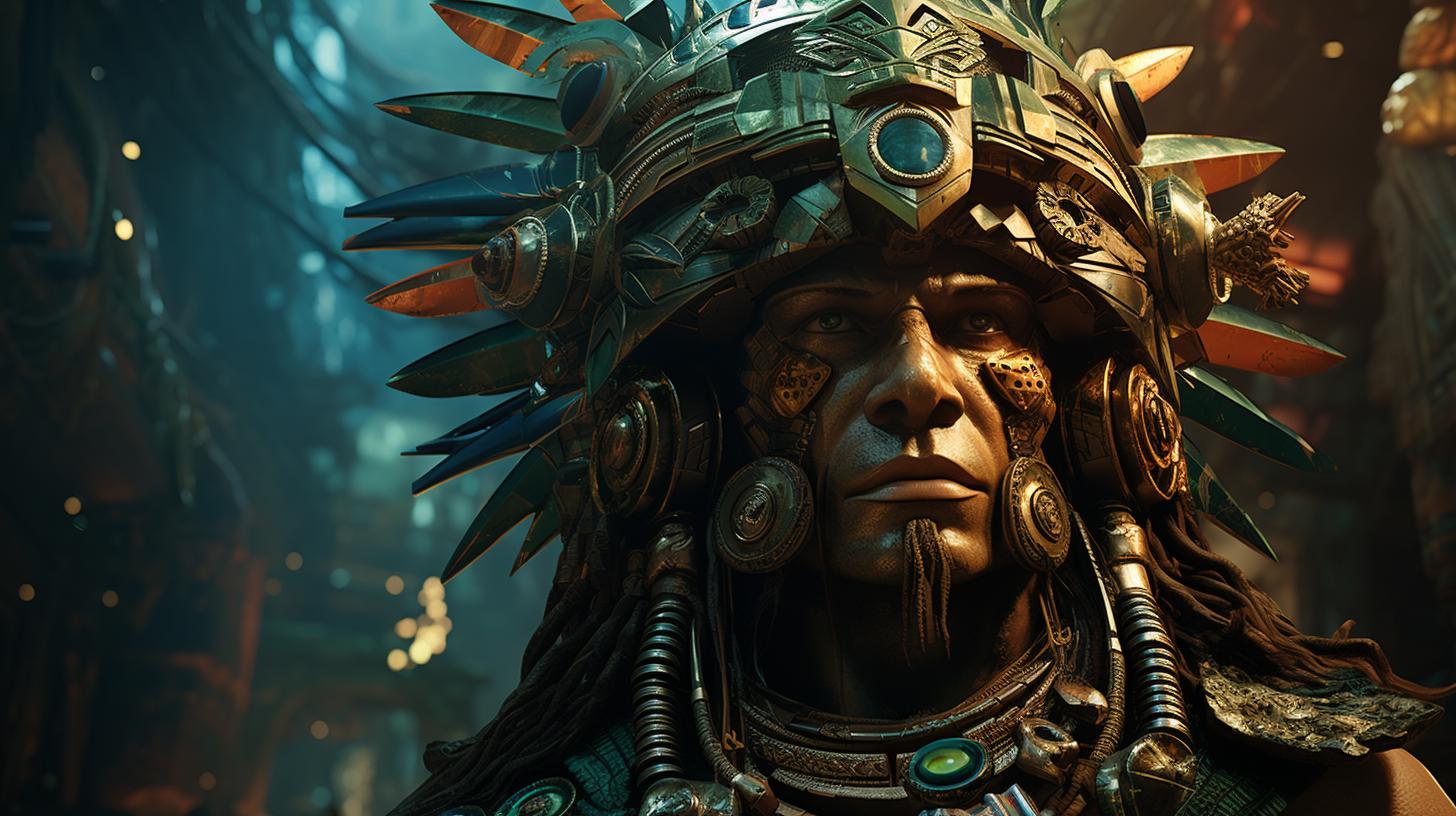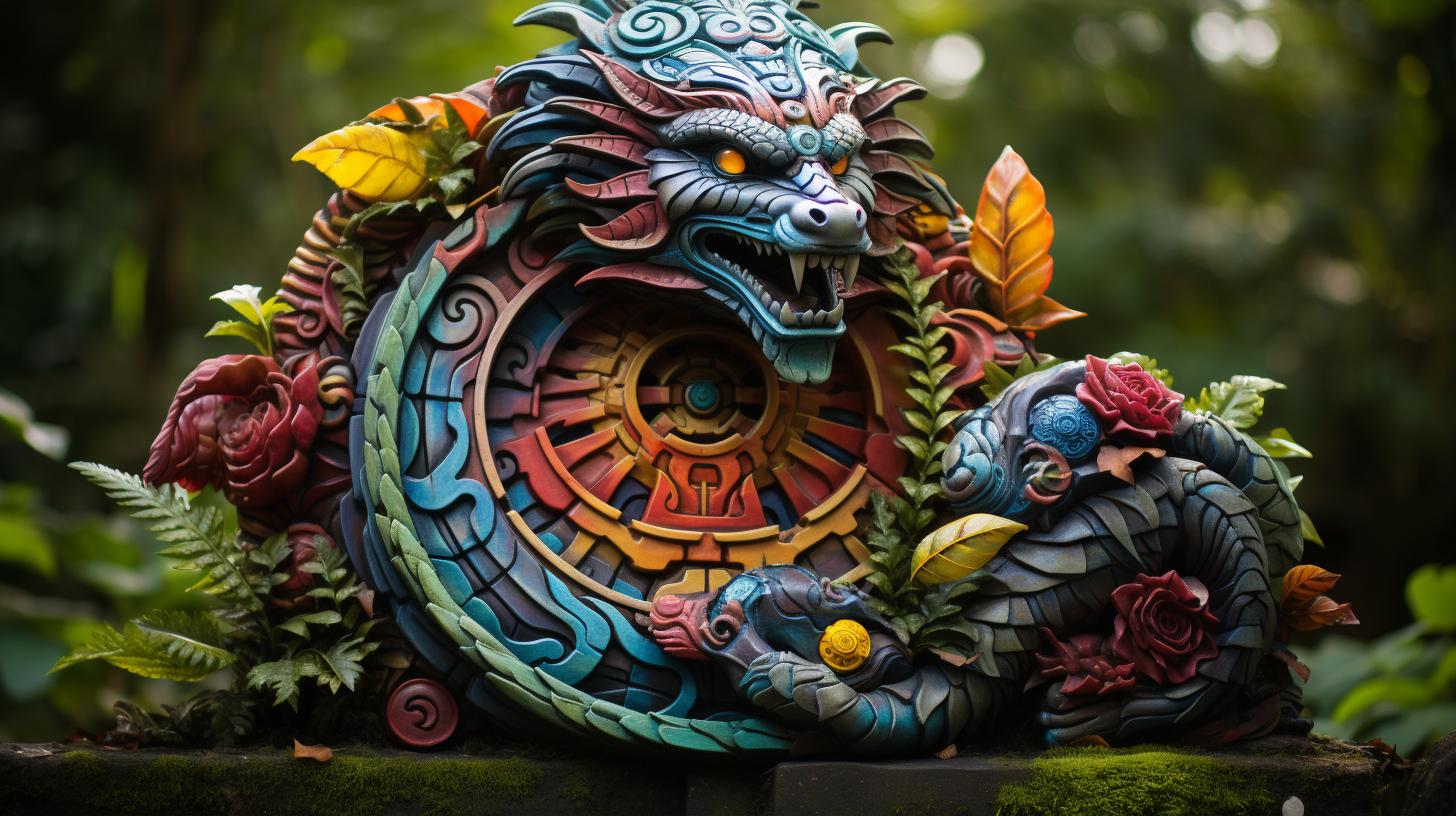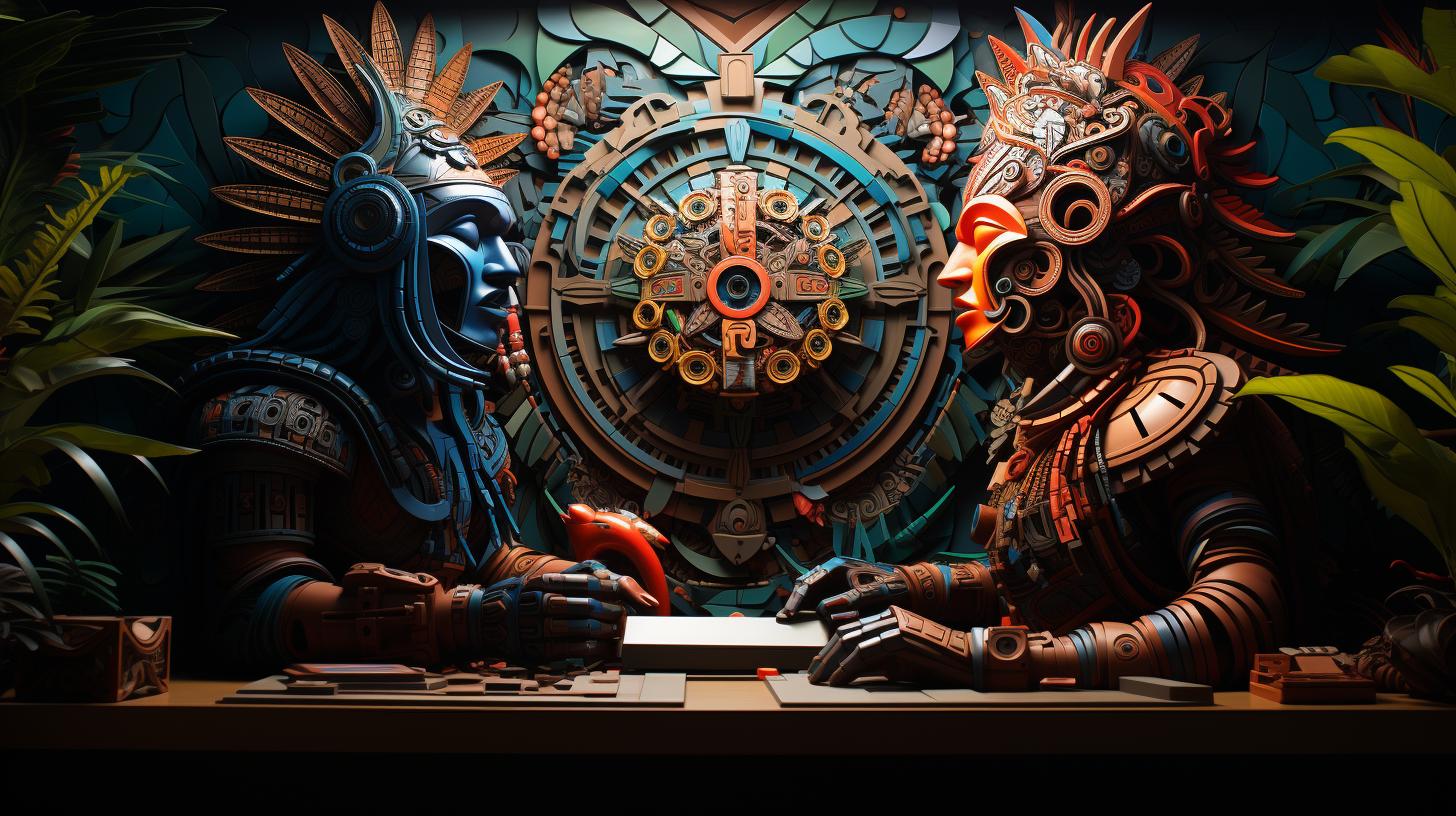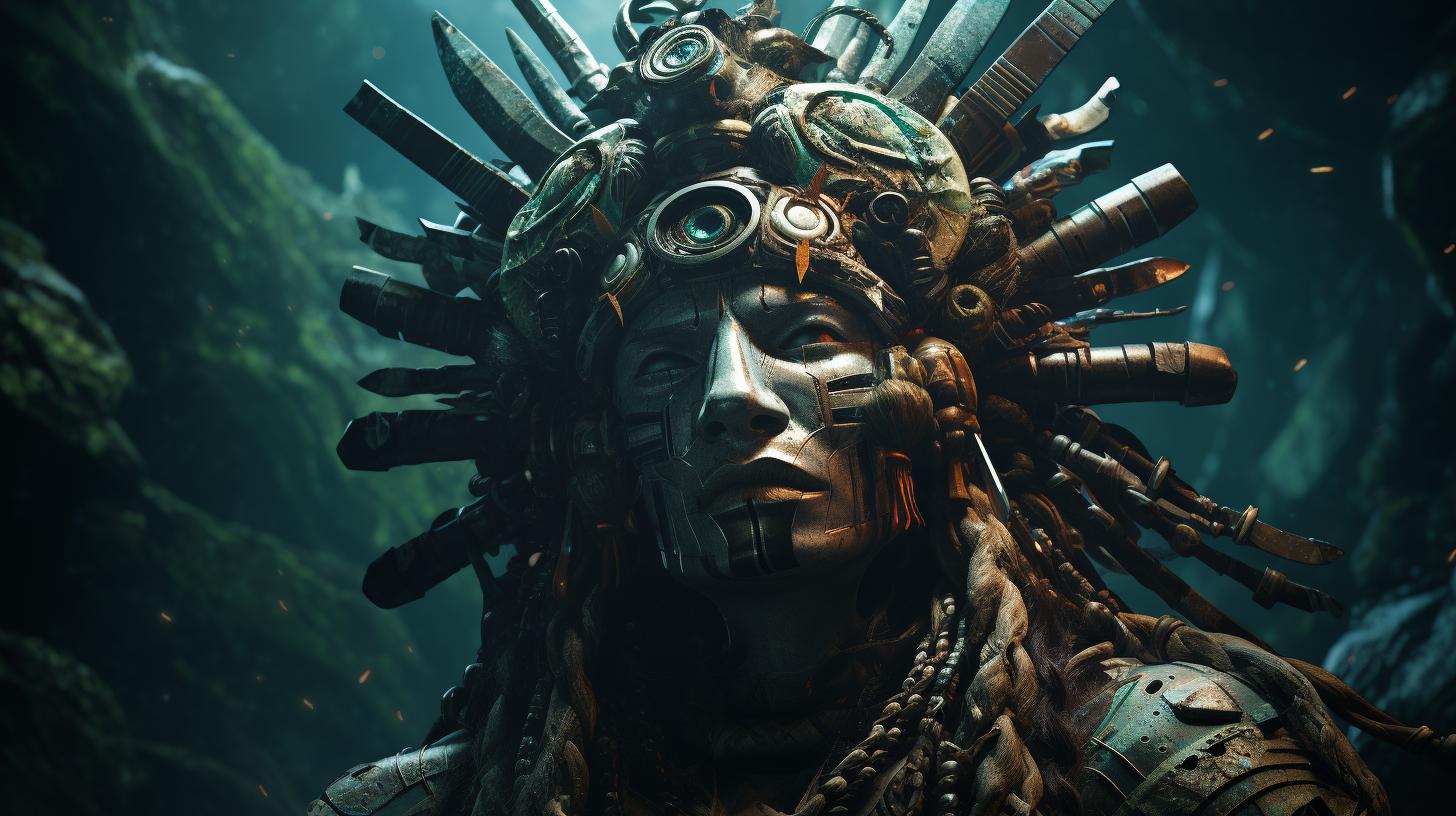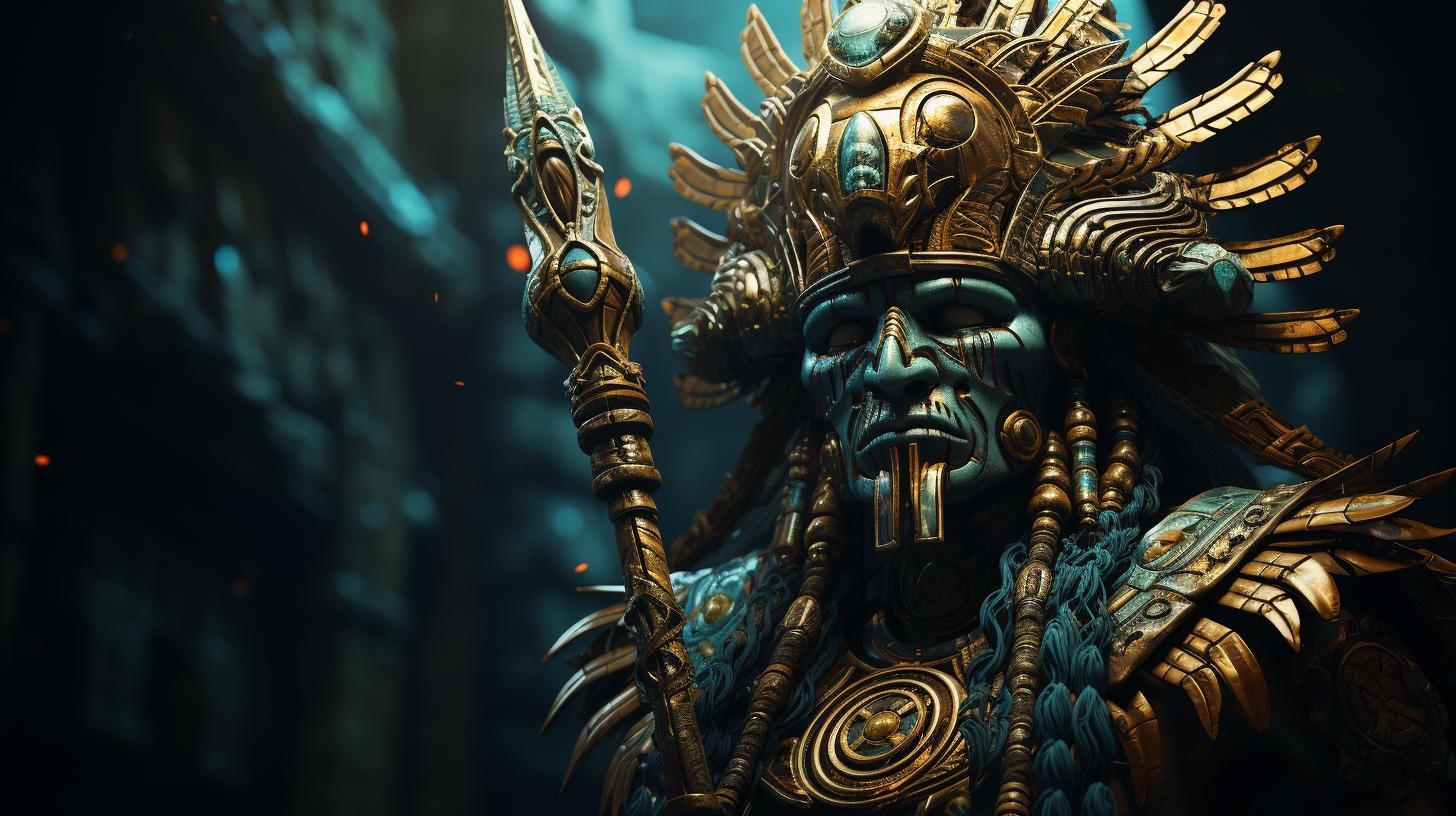Bacab Mayan God: Unveiling the Ancient Deity’s Secrets

The Bacab Mayan god holds a prominent place in the mythology and culture of the ancient Maya civilization. Known as the sons of the supreme deities Itzamná and Ixchel, the Bacabs were believed to be responsible for holding up the sky and preventing its downfall.
Their association with rainfall, agriculture, and healing made them integral to Mayan rituals and ceremonies. Depicted as both elderly figures with celestial dragons and youthful substitutes, the Bacabs played a crucial role in opening the rainy season on the Gulf coast.
Explore the fascinating world of the Bacab Mayan god as we delve into their origins, symbolism, and significance in Mayan cosmology.
The Bacab Mythology in Mayan Culture
The Bacab mythology holds great significance in the rich tapestry of Mayan culture. These ancient deities, known as the Bacabs, were revered as the protectors of the Earth and its precious water sources.
As the four sons of the supreme Mayan gods Itzamná and Ixchel, the Bacabs were entrusted with the vital task of upholding the heavens and preventing their collapse.
In Mayan cosmology, the Bacabs played a pivotal role in maintaining the delicate balance between the celestial and earthly realms. They were closely associated with the Chaacs, the rain gods, and the Pauahtuns, the wind gods, symbolizing their vital connection to natural forces that sustained life and agriculture.
The myths and legends surrounding the Bacabs often intertwine with mystical events, particularly during the Katun 11 Ahau, a significant cycle believed to bring forth cataclysmic changes. It was believed that the presence of the Bacabs would result in the sky falling upon the Earth, signifying the destruction of the world.
Through ancient rituals and ceremonies, the Mayans sought the favor and guidance of the Bacabs, invoking their powers to bring rain for bountiful harvests and healing for both the land and its inhabitants.
The depictions of the Bacabs vary, portraying them as wise elders adorned with celestial dragons or youthful figures representing their essence.
Unveiling the mysteries of Bacab mythology gives us profound insights into the intricate belief system of the Mayans and their profound reverence for the interconnectedness of nature, deities, and humanity.
Origins and Significance of the Bacabs
The Bacabs hold a prominent place in Mayan mythology and culture, with deep-rooted origins and significant symbolism. These divine beings are believed to be the offspring of the supreme deities Itzamná and Ixchel, adding to their importance in Mayan cosmology.
Derived from the Nahuatl word “Pauahtun,” the Bacabs are associated with the four cardinal directions and their corresponding elements. Each Bacab brother, Hobnil, Cantzicnal, Saccimi, and Hosanek, was assigned a specific cardinal direction to support and uphold the celestial realm, safeguarding it from collapse.
The Bacabs’ significance extended beyond their celestial duties. They played a crucial role in Mayan agriculture, acting as guardians of rain and fertility. Mayan communities relied on the Bacabs’ benevolence to ensure bountiful harvests and the overall well-being of their agricultural practices.
In addition to their connection with weather and agriculture, the Bacabs were renowned for their healing powers. They were invoked in various rituals and ceremonies, seeking their assistance in matters of physical and spiritual well-being.
The mysterious headdress worn by the Bacabs, in the form of a net, holds an enigmatic significance whose exact meaning remains uncertain. Scholars and researchers continue to explore the origins and cultural contexts surrounding this unique attribute.
As we delve deeper into the origins and significance of the Bacabs, their divine presence becomes evident in every aspect of Mayan life. From upholding the celestial realm to influencing agriculture and healing practices, the Bacabs’ importance in Mayan culture is undeniable.
The Role of the Bacabs in Mayan Cosmology
In Mayan cosmology, the Bacabs held a crucial role as the guardians of the Earth and sky. These divine beings were tasked with upholding the sky and preventing its collapse, effectively maintaining the balance and stability of the world.
As sons of the supreme deities Itzamná and Ixchel, the Bacabs were highly revered and considered essential for the continuity of life.
Beyond their role in sustaining the celestial sphere, the Bacabs were closely associated with the cyclical patterns of nature and played a significant part in the agricultural practices of the Mayan civilization.
They were believed to have control over rainfall, ensuring the fertility of the land and the success of crops. The Bacabs were venerated during rituals and ceremonies dedicated to seeking their favor for abundant harvests and a prosperous agricultural season.
Moreover, the Bacabs were intimately connected to the cosmological events surrounding the Katun 11 Ahau, a significant period in the Mayan calendar associated with prophecies and transformative changes. It was believed that the presence of the Bacabs during this period signaled a potential catastrophe, wherein the sky would descend upon the Earth, leading to the destruction of the world.
Understanding the role of the Bacabs in Mayan cosmology provides insights into the profound reverence the ancient Mayans held for these divine entities and their invaluable contributions to the natural and spiritual realms.
Bacabs as Guardians of the Earth and Sky
The Bacabs held a crucial role as guardians of both the Earth and the sky in Mayan mythology. They were assigned the task of supporting and preventing the sky, symbolic of the celestial realm, from collapsing onto the Earth, which would result in the destruction of the world.
As the sons of the supreme deities, Itzamná and Ixchel, the Bacabs embodied immense power and responsibility.
With their divine strength, the Bacabs ensured the stability of the cosmos by upholding the celestial plane. Their presence was essential in maintaining the delicate balance between the earthly and celestial realms.
Mayan cosmology believed that without the Bacabs, the heavens would descend, bringing catastrophic consequences to the world below.
In Mayan art and iconography, the Bacabs were often depicted as strong and steadfast figures, symbolizing their role as protectors of the Earth and sky. Their representations showcased their connection to the natural forces and their dedication to preserving the cosmic order.
The Bacabs’ association with the Earth and sky emphasizes their importance in Mayan mythology, highlighting their status as key figures in maintaining the harmony of the universe.
Bacabs and their Relationship with Itzamná and Ixchel
The Bacabs, as powerful deities in Mayan mythology, are believed to be the children of Itzamná and Ixchel, the supreme gods. Their relationship with Itzamná and Ixchel symbolizes their significance and connection to the cosmic order.
As offspring of these powerful gods, the Bacabs hold a position of authority and responsibility in maintaining the balance of the world.
The precise nature of the Bacabs’ relationship with Itzamná and Ixchel is not explicitly clear, but it is believed that they derive their powers from their divine parentage. Itzamná is associated with creation and cosmic sustenance, while Ixchel is known as the mother goddess and the patroness of childbirth and fertility.
The presence of the Bacabs in Mayan cosmology suggests their role in upholding and carrying out the will of the supreme deities.
Through their association with Itzamná and Ixchel, the Bacabs embody the union of male and female energies, signifying the harmony and balance necessary for the functioning of the world. Their relationship illustrates the interconnectedness of various aspects of Mayan mythology and highlights the divine lineage that grants them their authority and power.
Bacabs’ Association with Rain and Agriculture
In Mayan mythology, the Bacabs held a crucial role in the realm of rain and agriculture. They were closely connected to the Chaacs, the rain gods, and the Pauahtuns, the wind gods, forming a divine trinity that governed the natural forces essential for fertility and growth.
Ceremonies and rituals were performed to seek the Bacabs’ favor in ensuring abundant rainfall and successful harvests. The Mayans believed that their offerings and supplications would lead to bountiful crops and sustained livelihoods.
- The Bacabs were invoked during planting and harvesting seasons.
- Prayers were offered to them to prevent droughts and floods that could negatively impact agricultural productivity.
- They were revered as guardians of the fields, protecting the crops from pests and diseases.
- The Bacabs symbolized the delicate balance between the celestial and earthly realms, emphasizing the significance of rainfall for sustaining life.
Through their association with rain and agriculture, the Bacabs offered guidance and protection to the Mayan farmers, ensuring the continuity and prosperity of their communities.
Rituals and Ceremonies Involving the Bacabs
The Bacab Mayan god played a significant role in various rituals and ceremonies conducted by the ancient Mayan people. These practices were aimed at seeking the favor and blessings of the Bacabs for favorable weather, abundant crops, and overall well-being of the community.
During these rituals, the Mayans would gather in sacred places such as temples or altars dedicated to the Bacabs. Offerings were made, including food, flowers, and other valuable items, as a sign of respect and gratitude.
Prayers and chants were recited, and dances and performances were held to honor and invoke the presence of the Bacabs.
One notable ceremony involving the Bacabs was the Rain Dance. This ritual was performed during times of drought or when the need for rainfall was paramount. Participants, adorned with headdresses and ceremonial attire, would mimic the movements and sounds associated with rainfall, accompanied by rhythmic music and drumming.
The Mayans believed that through these rituals and ceremonies, they could establish a connection with the Bacabs and communicate their needs and desires. It was believed that the Bacabs would listen to their pleas and grant them the necessary blessings for a prosperous and harmonious life.
These rituals and ceremonies were an integral part of Mayan culture, demonstrating their deep reverence and reliance on the Bacabs and their influence on essential aspects of their livelihood.
Depictions and Representations of the Bacabs
The Bacabs, revered deities in Mayan culture, have been depicted in various forms throughout history. These representations have showcased the diverse and intricate nature of their existence.
Artistic renditions often depict the Bacabs as elderly figures, adorned with celestial dragons, symbolizing their celestial connection. These depictions emphasize their role as guardians of the Earth and sky, holding up the heavens to protect the world from destruction.
However, it is worth noting that the portrayal of the Bacabs is not confined to their elderly form. Some representations feature younger individuals, who serve as their substitutes. This duality highlights the cyclical nature of time and the passing of responsibilities from one generation to the next.
The Bacabs’ unique attire also holds significance. They are often depicted wearing distinct headgear in the form of a net-like structure. While the exact meaning of this headpiece remains unclear, it further accentuates their divine status and serves as a visual representation of their connection to the spiritual realm.
In conclusion, the depictions and representations of the Bacabs reflect their multifaceted role as protectors of the Earth and sky in the Mayan belief system. Whether portrayed as elderly figures with celestial dragons or younger substitutes, their attire and symbolism reinforce their powerful presence in Mayan mythology and culture.
The Bacabs and the Opening of the Rainy Season
The Bacabs played a crucial role in the Mayan belief system, particularly in relation to the opening of the rainy season. As the deities associated with water and agriculture, they were believed to have the power to control rainfall and ensure a bountiful harvest.
Mayan communities eagerly awaited the arrival of the Bacabs, signaling the start of the rains that would nourish their crops.
Ceremonies and rituals were conducted to invoke the presence and favor of the Bacabs during this significant time. The Mayans believed that by performing these rituals, they could secure the blessings of the Bacabs and ensure the success of their agricultural endeavors.
- Offerings were made to appease the Bacabs and show gratitude for their vital role in providing water for the crops.
- Prayers and incantations were recited to invoke the Bacabs’ power and influence over rainfall.
- Elaborate dances and performances were held to honor the Bacabs and express gratitude for their benevolence.
The opening of the rainy season was a time of celebration and hope for the Mayan people, as they recognized the importance of the Bacabs’ role in sustaining their agricultural livelihoods.
Their belief in the ability of the Bacabs to bring forth abundant rainfall strengthened their connection to the natural world and deepened their reverence for these powerful deities.
Bacabs in Mayan Prophecies and Legends
The Bacabs hold a significant place in Mayan prophecies and legends, weaving into the rich tapestry of Mayan mythology. They are believed to have the power to influence cosmic events and shape the destiny of the world.
In Mayan legends, the Bacabs are often associated with cataclysmic events and the end of the world. It is said that when the Bacabs are present, the sky would collapse, bringing chaos and destruction upon the Earth.
They serve as harbingers of both doom and transformation.
Furthermore, the Bacabs play a pivotal role in Mayan prophecies, providing insight into the future and guiding the decisions of the Mayan people. Their divine wisdom and foresight are sought after in times of uncertainty and upheaval.
- Prophecies of the Bacabs have been linked to significant historical events, such as the arrival of the Spanish conquistadors and the fall of the Mayan civilization.
- Legends speak of the Bacabs’ ability to communicate with the gods and interpret celestial signs, providing guidance on matters of war, agriculture, and spiritual practices.
- Their presence in rituals and ceremonies is believed to strengthen the connection between the earthly realm and the divine, facilitating communication with higher powers.
The Bacabs’ role in Mayan prophecies and legends highlights their importance as divine messengers and guardians of the Mayan civilization.
Their knowledge and influence transcend time, leaving an indelible mark on Mayan folklore and spirituality….











